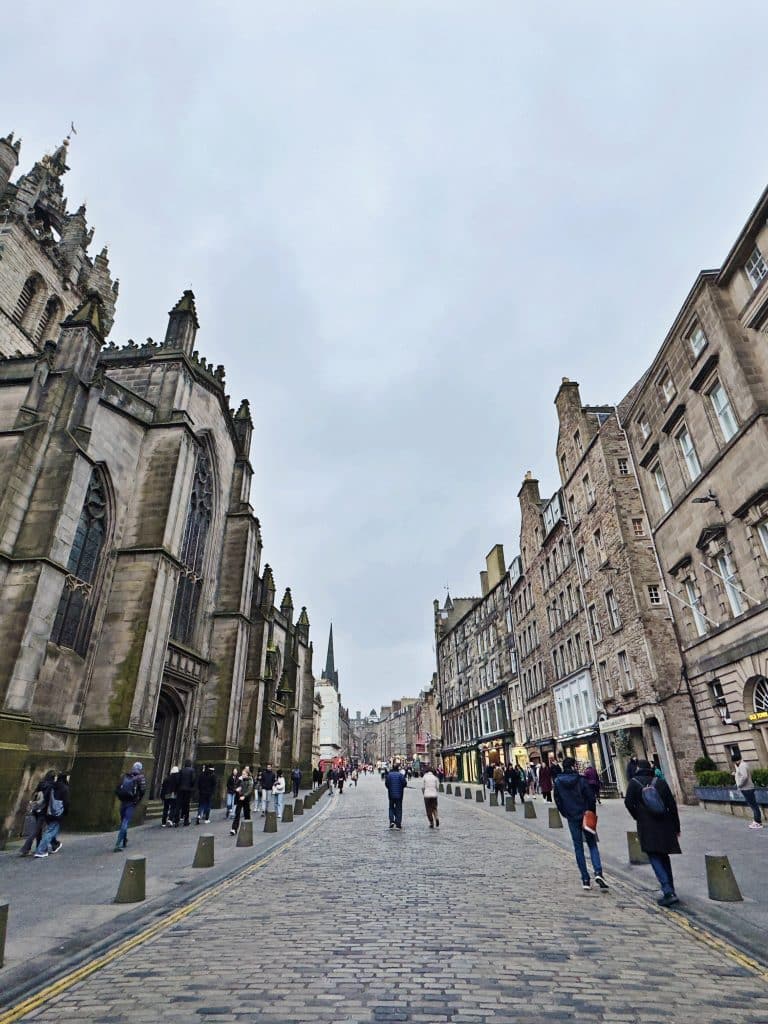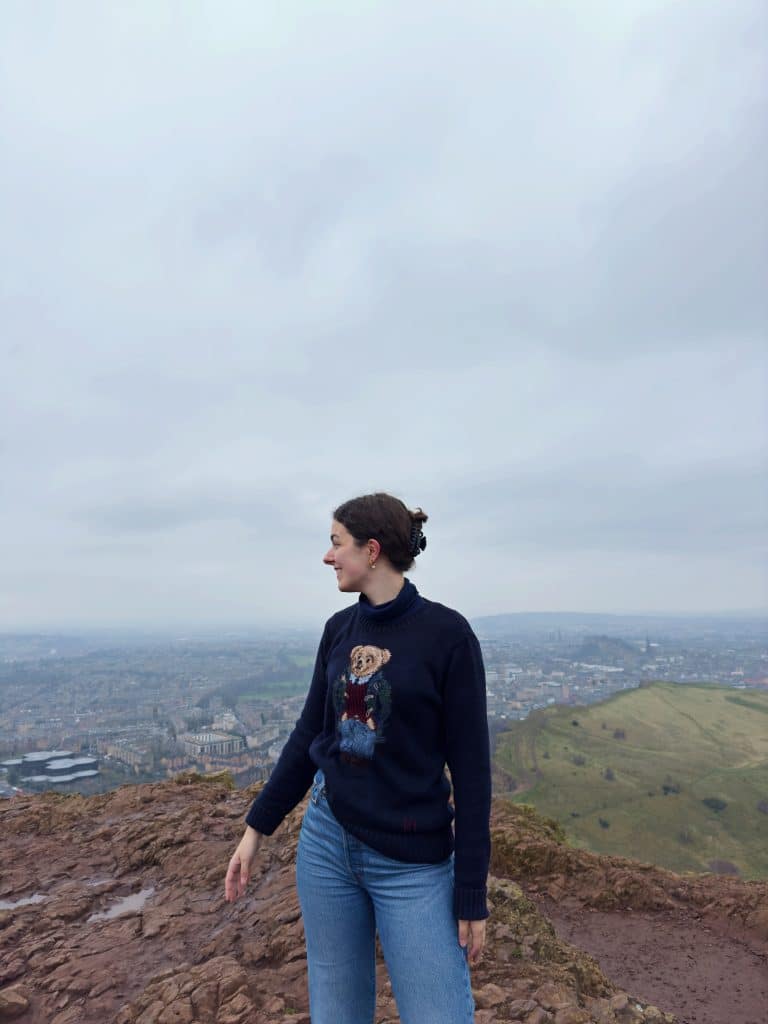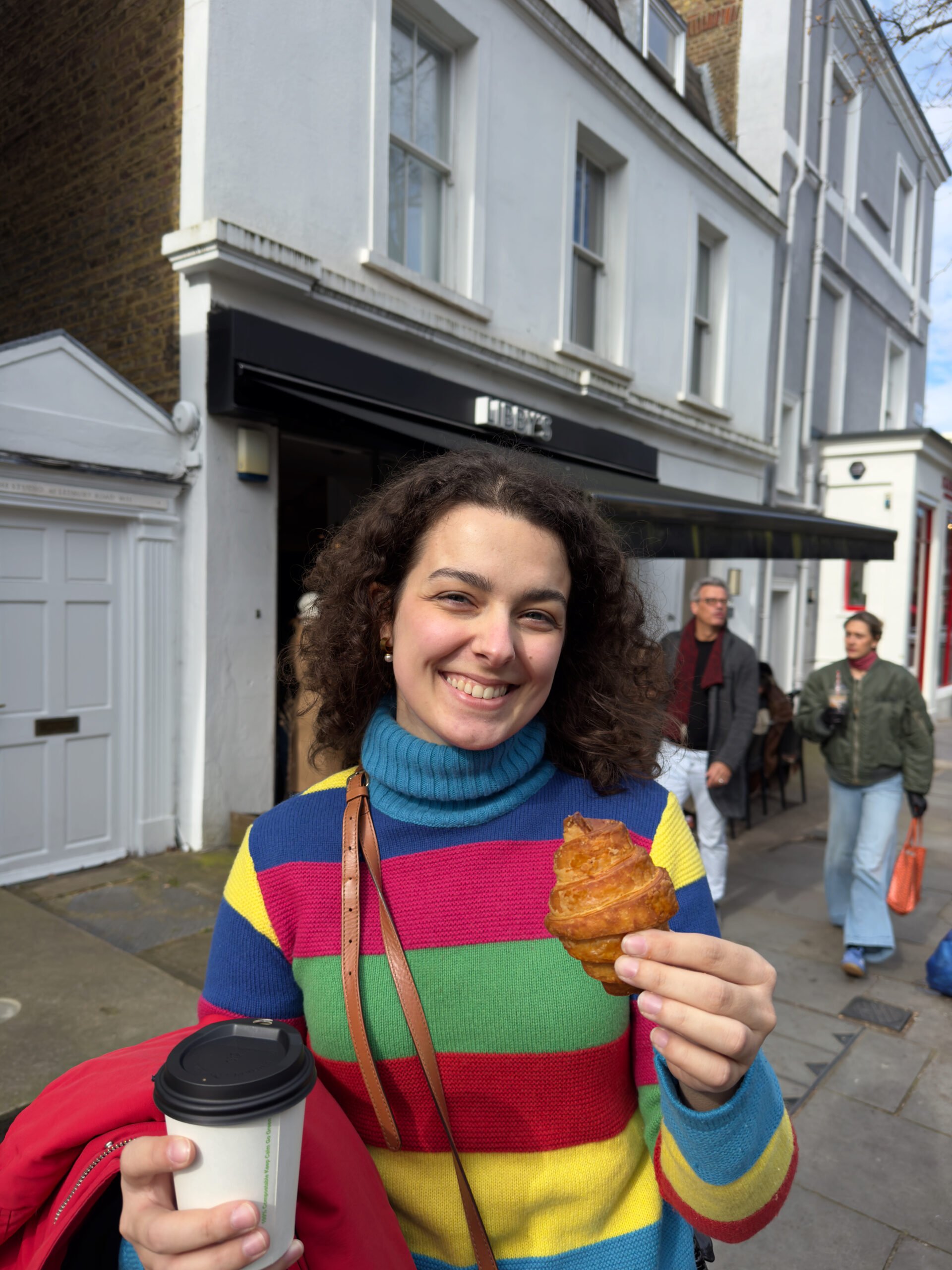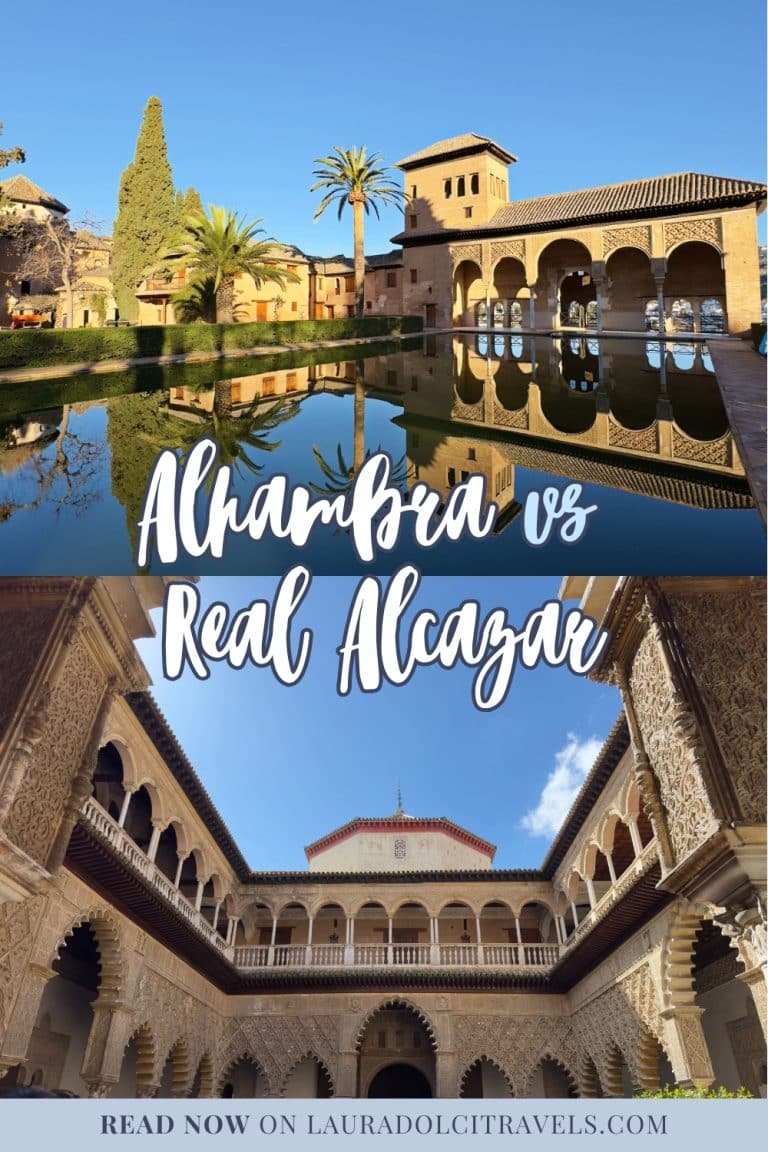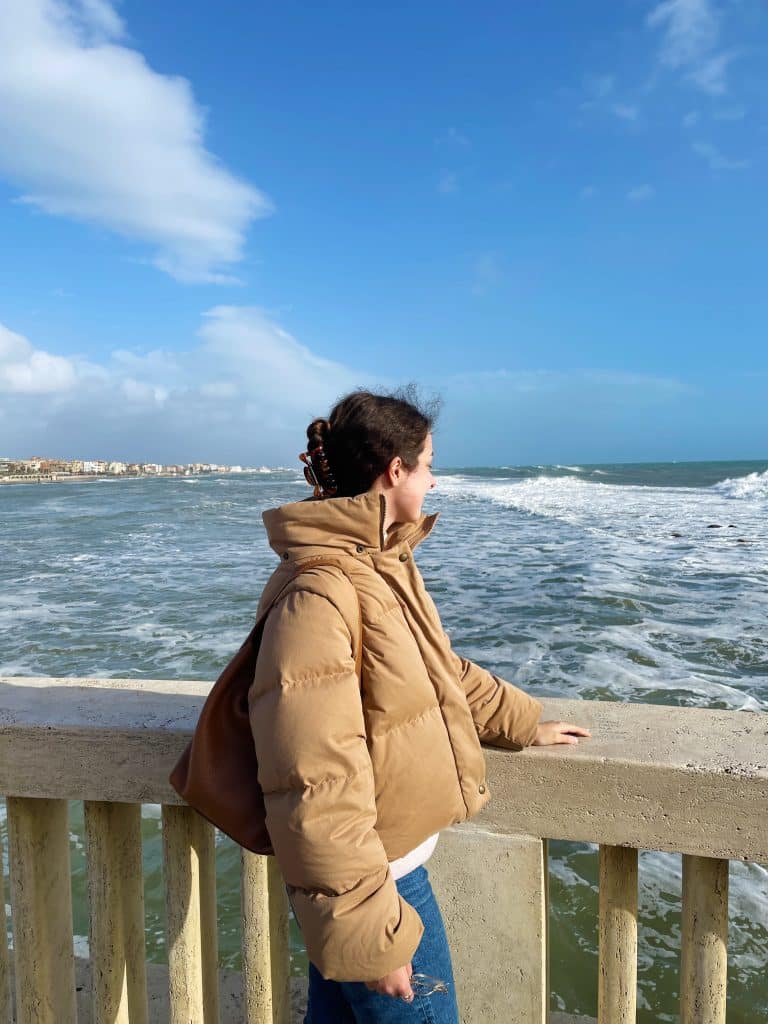The Ultimate Guide to the Kenrokuen Garden
When in Japan, strolling through a traditional Japanese garden is nothing but an absolute must. But if you are a fan of Japanese Gardens, you should take things to the next level and visit one of the most beautiful in the country.
In this guide, I share everything you need to know before visiting the Kenrokuen Garden and answer the most frequently asked questions. My aim is to help you make the most of your visit, and appreciate the Kenrokuen Gardens to the fullest.
Whether you are taking a day trip, or visiting Kanazawa for 2 days or more, this garden is a must visit during any season.
Without further ado, here is everything you need to know about the Kenrokuen Gardens!👇
Disclaimer: This post has affiliate links that can help me earn a small commission, at no extra cost to you. If you click through and buy with these links, thank you in advance for the extra support.💖😊
Everything to Know before Visiting the Kenrokuen Garden
Don’t have time to read yet? Grab my quick recommendations & save this for later!👇
🏠 Stay: Book your stay near Omicho Market for the best positioning.
✅ Prepare: Grab my FREE Japan Essentials eChecklist to make sure you are properly prepared!
🗺️ Protect yourself on your trip with Travel Medical Insurance.
📱 Connect: Always stay connected, and do so seamlessly, with a Japan eSim!📱
🇯🇵 Tours & Activities: Find the best Kanazawa tours and activities on GetYourGuide, Klook, and Viator.
The History of the Kenrokuen Garden
The Kenrokuen Garden dates back to the Edo Period, when the Maeda Clan ruled the Kaga Domain. The Maeda Clan was a wealthy Samurai family of high ranking officials who ruled Japan’s wealthiest domain for three centuries.
The Maeda family resided within the Kanazawa Castle, and built the Kenrokuen Garden as an outer garden. This family is responsible for the many wonders of Kanazawa, and the spectacular flourishing of Kanazawa’s art, culture, and cuisine.
The Kenrokuen Garden continued to expand and grow throughout the centuries that the Maeda family ruled.
Kenrokuen’s Six Sublimities
When translated, Kenrokuen means “the garden of the six sublimities”. For a garden to be considered perfect in Japan, it must have each of these 6 features.
A perfect Japanese garden offers beautiful views, is home to water works and artistry, and is spacious. Furthermore, it is fairly secluded and has an element of antiquity.
These six features can be easily spotted when walking through the Kenrokuen and it’s many highlights.
The Kenrokuen Highlights
Kasumiga-ike Pond

The Kasumiga-ike Pond is one of the two main ponds in the Kenroku-en Garden, along with Hisago-ike. The pond’s water apparently comes from a distant river thanks to a water system constructed in the mid-17th-century. The water from this river also feeds the Hisagoike pond and the garden’s streams.
Near the Kasumigaike Pond you will find Japan’s oldest fountain, which is powered by the pond’s drop in elevation. The fountain’s water shoots as high 3.5 meters, or 11.5 feet. (Kanazawa Station)
Karasaki Pine

The Karasaki Pine is an icon of the Kenrokuen Garden, and more than just a pine tree.
This beautiful black pine tree is one that receives a lot of care and maintenance. When you walk around the Kenrokuen, you will notice that this tree has lots of wooden structures that support it’s branches. These wooden structures don’t only support the branches, but also guide them into creating a wide canopy.
During the winter time, the Karasaki Pine is further supported by the Yukitsuri. Yukitsuri is a traditional Japanese technique in which ropes are attached to branches. These ropes help protect the pine tree branches from the winter’s heavy snowfall.
The Yukitsuri is a protective technique, but also adds an element of beauty to the garden in the winter time.
Kotoji stone lantern

The Kotojitoro Lantern is a beautiful, over 2-meter tall stone lantern that sits in the Kasumigaike Pond. This is one of the main icons of the Kenrokuen Garden.
Teahouses – Yugao-tei, Uchihashi-tei, and Shigure-tei

Can a garden be considered a Japanese Garden if it doesn’t have a tea house? I can’t answer this, but it does seem like tea houses play an important role.
In the Kenrokuen you will find six Chayas, “teahouses”, three of which are the Yugao-tei, Uchihashi-tei, and Shigure-tei. The Yugao-tei can be admired from the outside and is the oldest teahouse in the garden.
The Uchihashi-tei, on the other hand, is a teahouse that you can visit and enjoy Japanese delicacies in. This beautiful teahouse sits over the Kasumiga-ike Pond.
The Shigure-tei is the largest teahouse in the Kenrokuen Garden and can also be visited!
Kenrokuen kikuzakura
In the Kenrokuen, you will find over 180 different plant species and almost 9,000 trees. Amongst all of these beautiful plants and trees, you will find the Kikuzakura.
The Kikuzakura is a rare species of cherry blossom that has more than the traditional 5 petals. A Kikuzakura cherry blossom could have as many as 300 petals!😍
Seisonkaku Villa
Located right by the Kenrokuen Garden, the Seisonkaku Villa is a 19th century villa built by the 13th lord of the Kaga Domain. Maeda Nari Yasu built this beautiful samurai villa for his retired mother, so that she may always see the beautiful Kenrokuen Garden.
Within this villa you will see everything from tearooms, gardens, dolls and their furniture, traditional architecture, and more. To enter this villa, you need an entry ticket which costs 700 yen, roughly $4.70.
Activities
If you want to dive deeper into Japanese culture and are a tea lover, this highly-rated experience is perfect for you!
During this Tea Ceremony within the Kenrokuen Garden, you will learn the secrets of tea-brewing, how to use traditional utensils for matcha, and enjoy some Japanese delicacies.
If this experience sounds like your cup of tea (fully pun-intended), book your spot before it sells out!😍👇
Seasonality
One of the spectacular aspects of the Kenrokuen Garden is its seasonality, and how it looks perfect year round. Out of the four seasons, Fall, Winter, and Spring are the best seasons to visit.
Here is what Kenrokuen Garden looks like in the Fall, and Spring.
Kenrokuen Garden in the Fall

One of the best times of the year to visit Kenrokuen Garden is during the Fall, thanks to the many deciduous trees deliberately planted to create colourful displays. In particular, the colours are at their peak during November. When I visited Kenrokuen Garden in mid-October, the trees were just starting to change colour, with hints of gold and orange.
Due to a typhoon affecting the bullet trains, I had to cut short my overnight stay in Kenrokuen and nearly missed visiting the gardens altogether. However, I luckily discovered that the gardens are open early in the morning, before regular visiting hours, with free entry.
The gardens officially open at 7am or 8am depending on the month, but early admission occurs from 5am up until the end of October, then from 6am during the rest of Fall. Visiting the garden shortly after sunrise was a magical experience, with hardly anyone else to disturb the serenity of the gardens (or appear in my photos).
Another experience to consider during Fall is the late night illumination. The gardens re-open to the public after dark on selected Saturdays and holidays during Fall, with the trees beautifully illuminated. Entry is free to the lighting events.
Contributed by Shandos Cleaver of Travelnuity
Kenrokuen in the Spring

If you want to experience a magical cherry blossom scene, you must visit during the spring!
To experience the peak bloom, it’s best to visit late March and early-mid April. I visited in mid-April and the cherry blossom scene was still spectacular, just not at its peak.
Starting in March, the entry hour of the Kenrokuen is at 7 AM. If you want the garden to yourself, you can enter at 5 AM (March), or even 4 AM starting in April!
During the year there are select weeks or weekends where the garden opens at night for an illumination “show”. At this time you would walk around the Kenrokuen Garden and see it beautifully lit up at night.
Renting a Kimono
If you’ve been wanting to rent a Kimono and walk around a beautiful Japanese town or garden, Kanazawa and the Kenrokuen Garden are the perfect place!
There are many places around Kanazawa to rent Kimonos. One of the most popular ones, which is nearby the garden, is Vasara Kimono Rental.
When in Kanazawa, you will usually see people dressed in Kimono in the Kenrokuen Garden or in the famous Higashi Chaya District.
Important Visit Tip
The Kenrokuen Garden area with the Kasumiga-ike, Pond Kotojitoro Lantern, and so forth, is the area you essentially paid to enter. If you walk around the entire garden (which I recommend), you will unknowingly exit the Kenrokuen and will need to show your ticket again.
In shorter terms, keep your Kenrokuen Garden entry tickets for the entire visit. Bonus, they make a beautiful souvenir!😍
Best Time to Visit the Kenrokuen Garden
Being a garden for all seasons, the Kenrokuen Garden is great to visit year round during any season. With that said, the best time to visit the Kenrokuen Gardens depends on what you want to see.
For a bright foliage, it’s best to visit in the fall – starting in late October. For the cherry blossoms and endless pink, you need to visit in the spring – starting early-mid April.🌸
If you want to see the Yukitsuri, you’ll need to visit any time between November 1st to mid-March. For a winter wonderland, visit between late December and February.🌨️
In terms of hours, if you want to have the Kenrokuen Garden to yourself, it’s best to visit during the early hours. The early hour admission varies per season, and can start as early as 4 AM!🤯
How to Reach the Kenrokuen Garden from Kanazawa Station
By Foot | 36 Minutes BUT…

When you are walking to the Kenrokuen Garden from Kanazawa Station, you will first pass through the beautiful Kanazawa Castle Park. This is a very simple and straightforward walk full of beautiful things to see and admire.
If you’re not a time crunch and are able, I strongly recommend walking from the station to the Kenrokuen Garden!
By Bus | 18 Minutes
There are several buses always running from the Kanazawa Station, so this is a very convenient way to reach the garden. A bus ticket should cost around 210 yen, roughly $1.5. Simply tap your Pasmo Passport or Suica Card, and you’re set!
By Car | 13 Minutes
Are you driving around Japan? Or maybe you prefer taking a taxi? Then this will be the shortest commute from Kanazawa Station to the Kenrokuen Gardens.
Haven’t rented your car yet? Discover all the best rental car deals here!🚗
Kenrokuen Gardens FAQ
How much does it cost to go to Kenrokuen Garden?
The general adult entry fee for the Kenrokuen Garden is 320 yen, roughly $2. For kids from the ages of 6 to 17 it is 100 yen, around $0.68, and free for adults 65 and over with ID.
The only other time that the Kenroku-en Garden is free is during the Early Admission Hours. These hours vary depending on the time of the year, they could start either at 4 AM, 5 AM, or 6 AM.
With that said, the Kenroku-en Garden can be free, but usually is not.
Why is Kenrokuen Garden famous?
The Kenrokuen Garden is the garden of the six sublimities that make a garden perfect. The six sublimities are water bodies, spaciousness, seclusion, artifice, antiquity, and views.
How long to spend in Kenrokuen Garden?
The Kenroku-en Garden is a great place to slow down in and really let yourself be entranced by the Japanese garden beauties. An average visit lasts between one to 2 hours, but one can easily spend more time.
The Kenrokuen has several attractions and some activities for people to partake in.
Can you eat in Kenrokuen Garden?
Yes! The Kenrokuen, along its several teahouses, and some spots in which you can grab food and eat.
Read more on Japan
- Is Kanazawa Worth Visiting? 14 Reasons Why it Is!
- How to Spend the Best 2 Days in Kanazawa
- 18 Best Things to do in Kanazawa
- The 6 Best Gluten Free Restaurants in Kanazawa, Japan
- 23 ESSENTIAL Tips + Things to Know Before Visiting Japan
- Do’s and Don’ts in Japan: Etiquette Guide for New Visitors
- Do I really need a JR Pass in? Here’s Everything You Need to Know!
Grab my e-Checklist to make sure you’re properly prepared for Japan!👇
Want more help with your travels? Check out my services!
One of the main reasons I became I travel blogger is my love and passion for helping others experience the best of their destination. I offer three services on Thatch: Customized Itineraries, Customized Recommendations, and Consultation Calls.
If you want extra help on your Japan travels, check out my Thatch page and book my services!
📌 Pin this for your Future Japan Travels!👇





